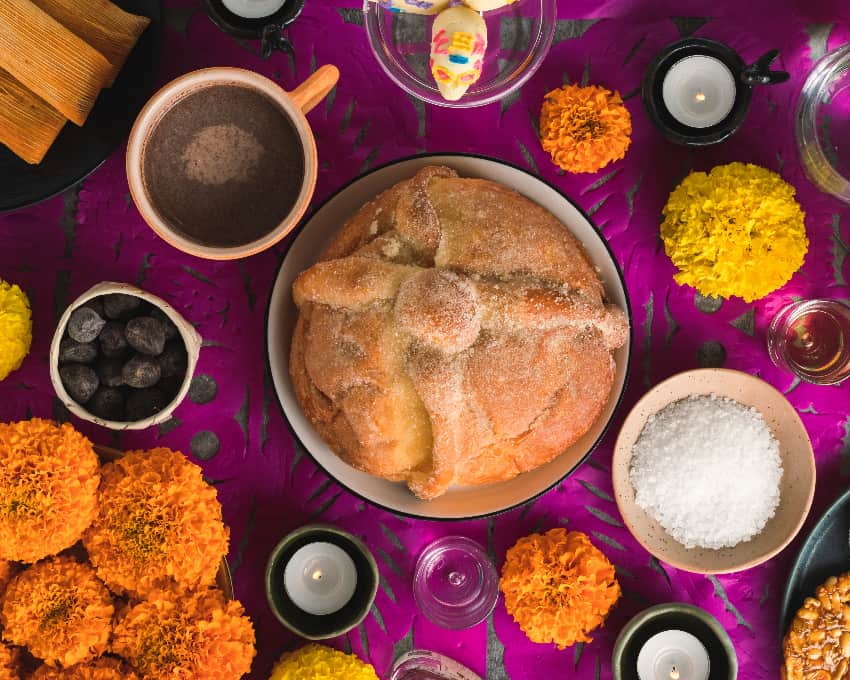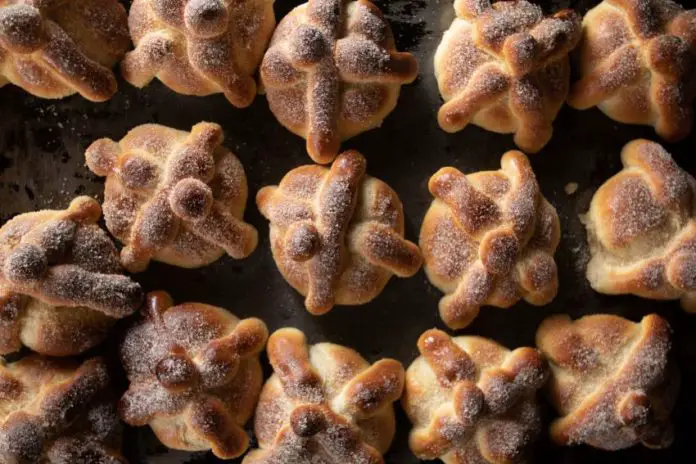Pan de muerto, or “bread of the dead,” isn’t your everyday loaf; it’s a sweet offering that embodies the tradition of honoring the dearly departed. Its origins trace back to the Aztecs: they made a flatbread made from amaranth seeds, offered various foods to the dead, much like our Day of the Dead altars have today. Ancient civilizations were not squeamish when it came to the dead, what with all the human sacrifices and such. The Romans, for instance, turned death into a full-blown spectacle with their gladiator combats, all while spectators chomped down on their Roman version of hot dogs and popcorn. The Aztecs, also known to sacrifice a few folks here and there, would sometimes perform these rituals on top of their pyramids with large obsidian knifes.
The reasons behind these sacrifices, as described by Spanish accounts, need to be taken with a grain of salt. The Spanish didn’t speak the local language fluently, and it served them well to paint the locals as “murderous savages” to justify conquest. When the Spanish conquistadors arrived, the Aztec Empire was at its peak, and they had a lot of war captives. The mass sacrifices that the Spanish witnessed may have been more a practical means of dealing with enemies than purely a religious ritual to appease gods.

Back to the bread! The Spanish brought over wheat, and it was slowly adapted by the locals. Pan de muerto also gets its signature flavor from orange zest, which is meant to symbolize the zest of life — yes, even after you’re long gone, there’s still room for a little citrus kick. The sugar on top is a reminder of the sweetness of life and death. If you’re going to the afterlife, you might as well go with a sugary grin.
During Dia de Muertos, Pan de Muerto is placed on ofrendas (altars) alongside candles, marigolds and tequila, because even the dead deserve a good time. As you munch on this rich, sweet bread, just remember: it’s a delicious nod to the past, where offering a snack was preferable to, say, offering your neighbor. Enjoy it — life, death and bread have never tasted this good.
Pan de muerto
Ingredients
For the bread
- 4 cups all-purpose flour
- 1/2 cup granulated sugar
- 1/2 tsp salt
- 1 tbsp orange zest
- 1 packet (2 1/4 tsp) active dry yeast
- 1/2 cup warm milk (110 F / 45 C)
- 1/4 cup warm water (110 F / 45 C)
- 4 large eggs
- 1/2 cup unsalted butter, softened
For the topping
- 1/4 cup unsalted butter, melted
- 1/4 cup granulated sugar
- 1 tsp ground cinnamon (optional)
Instructions
- Activate the yeast: In a small bowl, combine the warm water and yeast. Let it sit for about 10 minutes until it becomes foamy.
- Mix dry ingredients: In a large bowl, mix together the flour, sugar, salt, and orange zest.
- Combine wet ingredients: In a separate bowl, beat the eggs, and then add the warm milk and the activated yeast mixture.
- Form the dough: Make a well in the center of the flour mixture, and pour in the wet ingredients. Add the softened butter a little at a time, mixing until the dough comes together.
- Knead the dough: Turn the dough out onto a lightly floured surface and knead for about 8-10 minutes, until it becomes smooth and elastic. If the dough is too sticky, add a little more flour, one tablespoon at a time.
- First rise: Place the dough in a greased bowl, cover with a damp cloth, and let it rise in a warm place for about 1 1/2 to 2 hours, or until it has doubled in size.
- Shape the bread: Punch down the dough, then divide it into two pieces—one large for the base, and a smaller portion to create the decorations. Shape the larger piece into a round loaf. With the smaller piece, roll out dough strips pressing down in the shape of a peace symbol to get two skinnier parts and three fatter parts. Boom, you have made bone shaped dough. Place them decoratively over the top.
- Second rise: Place the shaped loaf on a parchment-lined baking sheet, cover lightly with plastic wrap or a cloth, and let it rise again for about 40 minutes to 1 hour.
- Bake: Preheat your oven to 350°F (175°C). Once the dough has finished its second rise, bake it for 30-35 minutes, or until the bread is golden brown and sounds hollow when tapped.
- Add topping: Let the bread cool slightly, then brush it with the melted butter. Sprinkle the granulated sugar (mixed with cinnamon, if using) generously over the top.
Enjoy Your pan de muerto: Serve your pan de muerto with hot chocolate or café de olla as part of your Día de Muertos celebrations. Enjoy this treat while honoring your loved ones!
Stephen Randall has lived in Mexico since 2018 by way of Kentucky, and before that, Germany. He’s an enthusiastic amateur chef who takes inspiration from many different cuisines, with favorites including Mexican and Mediterranean. His recipes can also be found on YouTube.

Wonderful!